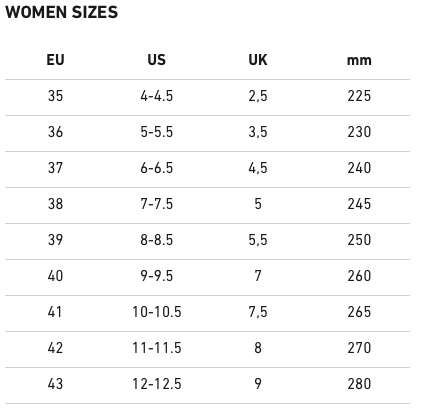Episode 44: Birkenstock QS700
- barefootshoereview
- Apr 24, 2021
- 5 min read

Perhaps the most elusive, and somewhat misunderstood footwear in the barefoot shoe community is the fabled "barefoot safety boot". I have covered this topic in a previous post, and have finally had the chance to test one of the models I found. Being in the construction industry for almost half my life - I can attest that wearing these for 8-10 hours a day is a whole new world of pain. Often regarded as the "male version of a heel" due to their extreme traits (heavy weight, lack of flexibility, steel cap hitting toes, narrow toe box, heel drop) - I'm sure they've damaged my feet, as well as millions of other peoples feet. However, it isn't as simple as getting a Vivobarefoot shoe, and adding a steel-cap, and please DON'T wear boots without a steel-toe or slip resistance, unless its extremely light work and it's permitted. This ideologically based misinformation/dialogue has been floating around the barefoot community recently, being spread by people who have never stepped foot on a construction site, let alone stepped on Rebar for 8-10 hours a day. It has to come to a rest...
With this in mind, lets take a deeper dive into the QS700 by Birkenstock - one of the best safety shoe options out there for barefoot shoe enthusiasts. The QS 700 is a smart looking boot, which is available in the colours shown below, ranging in sizes 35-48, and packed with all the features you'd expect in a high-quality safety boot - including a 200-joule steel toe. The one thing that sets it apart from other safety boots I've come across however, is it's large toe-box (comparable to Vivo, Xero, Joe Nimble etc.), and its zero-insignificant heel-drop once the insole is removed.
They're currently available for purchase on the Birkenstock webpage - delivering to most countries within Europe and the UK.
They're also available at B-Store for Australian customers.
Image 1: Black (Microfibre). Image 2: White (Microfibre). Image 3: Brown Oily (Oiled Nubuck Weather). Image 4: Black (Natural Leather). Image 5: White (Natural Leather)
Company Overview:
"Birkenstock is a global brand, and is not only one of the top five global footwear brands, it is also one of the most well known German brands in the world. With around 3,000 employees, this tradition-rich, sixth-generation family-owned business is also the German footwear industry’s largest employer. About one in four employees in the industry works at Birkenstock. More than 1,100 new jobs have been created since the beginning of 2013, almost all of them in Germany. This is because Birkenstock produces most of its products at its own production facilities in Rhineland-Palatinate, North Rhine-Westphalia, Hesse and Saxony."
Manufacturing and Sustainability:
Code of Conduct for Birkenstock suppliers and employees - based on principles of the Global Compact issued by the UN and the International Labor Organisation (Compliance with laws, prohibition of corruption and bribery, prohibition of child labour, environmental protection etc.)
Sandals are manufactured in Germany under EU conditions
Closed shoes are manufactured in Portugal under EU conditions
Raw materials come from sustainable natural resources and are sourced from Europe where possible





Initial Impressions:
Quite smart looking
Great quality throughout - I particularly like the scuff cap on the toe and heel
Quite wide throughout... Amazing compared to previous workbooks, and on par with Xero, Vivo, Joe Nimble etc.
With the insole removed they are zero-drop, or 1-2mm
Sizing and Fit:
**Foot: 292mm x 110mm with widest part at the mid-foot. I'm normally an EU47 or US13 in most brands.**
Length: I took a bit of a gamble with the Birkenstock QS700, as I was unaware how the steel-toe would impact the sizing, and how they'd feel on my toes. As my feet are approx. 292mm in length, I added the usual amount of 10-12mm extra and went for the EU 47 at 305mm. This was the correct choice
Width: The width is quite generous throughout, and they measure approximately 105-110mm at the widest point
Volume throughout the shoe is mid-high, and the laces allow you to secure your foot in easily
Toe-box: The toe-box doesn't restrict my feet too much, however it isn't the same as a sneaker - in which your feet can stretch, or mould into the toe-box. The size/fit of the toe-box is quite comparable to run of the mill Vivo, Xero or Joe Nimble sneakers or boots



Performance:
The QS700 is a safety boot first and foremost. By no means is this a Vivobarefoot Gobi or a Zeazoo Pelican... They're not meant for casual daily wear, they're designed for protecting your feet against the worst possible scenarios - and they achieve just that. However, they differ from other safety boots on the market, as they do have minimalist traits.
1. Upper and lining:
The upper is a synthetic Microfibre, and feels quite soft
The lining is made from the same Microfibre, however it's perforated and has minimal padding - which could be problematic for from obstacles on worksites
2. Sole:
Nitrile Rubber (SRC) penetration-resistant, metal-free, nonslip, and oil- and petrol-resistant outsole (P, SRC, FO); energy absorption around heel (E); antistatic protection (A)
Wide and flat throughout
About on par with a Lems Boulder boot, in regards to flexibility
3. Additional features
Packed with features making it a feasible work boot. Steel cap toe, penetration-resistant sole, non-slip, oil and petrol resistant, anti-static protection
4. Weight
It is a safety boot with a steel toe, and is about as heavy as a standard safety boot


Technical Specifications:
Upper: Water-resistant microfiber (WRU)
Footbed: Removable, anatomically shaped cork-microfiber footbed (I removed this and am using a True North Sole insole)
Stack Height: Approx. 20-25mm
Sole: nitrile rubber (SRC)
Drop: Unknown - It feels as though its 0mm, however it could be 1-2mm
Weight: Approx. 1200g for both shoes (EU 47)
Available sizes: EU 35-48
Details: steel toe (200 joules) with scratch-resistant toe cap; penetration-resistant, metal-free, nonslip, and oil- and petrol-resistant outsole (P, SRC, FO); energy absorption around heel (E); antistatic protection (A) Safety shoe certified in accordance with EN ISO 20345:2011 Protection category S3
Price: 115 GBP (Microfibre) 125 GBP (Leather)
Future Improvements:
Slip-On elastic model options
Options with a slightly lower stack height
Zip-up sides
Where and how to wear:
Put these bad-boys to work, it's what they're made for!


Birkenstock QS700 vs Standard Safety Boots:
Pictured left are my old work boots (which are fairly standard). The toe-box is narrow and pointed, and even without the insole - the shoe still has a heel drop.

Birkenstock QS700 vs Typical Barefoot Boots:
Photo 1: Pictured left is the Birkenstock QS700 in comparison to the Xero Bison and the Feelgrounds Patrol. Both the Xero and Feelgrounds are popular barefoot/minimalist boots, yet they have a toe-box which is comparable to the Birkenstock.



Birkenstock QS700 insoles vs Typical Barefoot Shoes insoles vs Standard Safety Boots insoles:
Pictured left are a standard safety boot, second from left are the birkenstock stock insole for the QS700 (which I removed).

Conclusion:
As mentioned, many people in the barefoot community have misconceptions as to what can be worn on a worksite, which can be attributed to not spending time working in construction. Making the move to producing foot shaped safety boots is the next step to remedy this for most physical jobs requiring them, and the Birkenstock QS700 has definitely changed my life for the better.
I was beyond excited when I put these on... With the steel cap removed (hypothetically), they'd be on par with the Lems Boulder - making it such a relief when having to wear them. They're never going to be perfect, because they're not a performance shoe; they're meant to protect your feet from danger, which also constitutes as walking on harsh surfaces for 8-10 hours a day. If you need safety boots, and cringe each time you need to put yours on, then at the moment - these are probably the best option out there... On top of this, the quality/style is pretty darn exceptional too.



















You should say which size of these fit best and what size of vivos and other well known brands you wear... So we can know which ones to get because everyone is saying different things - like to get it extra long. One reddit says they were 4 sizes too short. Two redditors said the toebox is tiny, but it doesn't look like it in the photos.
Great, in depth review. How have they held up overtime? I have seen a fair few reviews of people that have problems in the durability of these over say a 12month period, but are they just bad apples of a much larger bunch and it’s a squeaky wheel gets (your online attention) grease?
I would tend to go through a pair of your standard safety boots in a 12 month period, but these are around 1.5times the price I find my normal boots for.
cheap Birkenstock UK from https://www.shoesexpress.co.uk/, The casual Birkenstock Kyoto sandal takes its inspiration from the classic Birkenstock Zurich model and stands out with its compact design and individually adjustable buckle. This offers optimum grip and is complemented by two decorative rivets. The exquisite footbed is fully lined with soft smooth leather and matches the shoe in color. This ensures an exceptional level of comfort. The upper is made from especially soft suede which hugs the foot like a second skin.
[URL='https://'][B]cheap Birkenstock UK[/B][/URL], The casual Birkenstock Kyoto sandal takes its inspiration from the classic [B]Birkenstock Zurich[/B]model and stands out with its compact design and individually adjustable buckle. This offers optimum grip and is complemented by two decorative rivets. The exquisite footbed is fully lined with soft smooth leather and matches the shoe in color. This ensures an exceptional level of comfort. The upper is made from especially soft suede which hugs the foot like a second skin
very nice article; informative and helpful
thank you for posting
keep blogging
<a href="https://centro.style/brand/birkenstock.html"> Birkenstock stores near me </a>